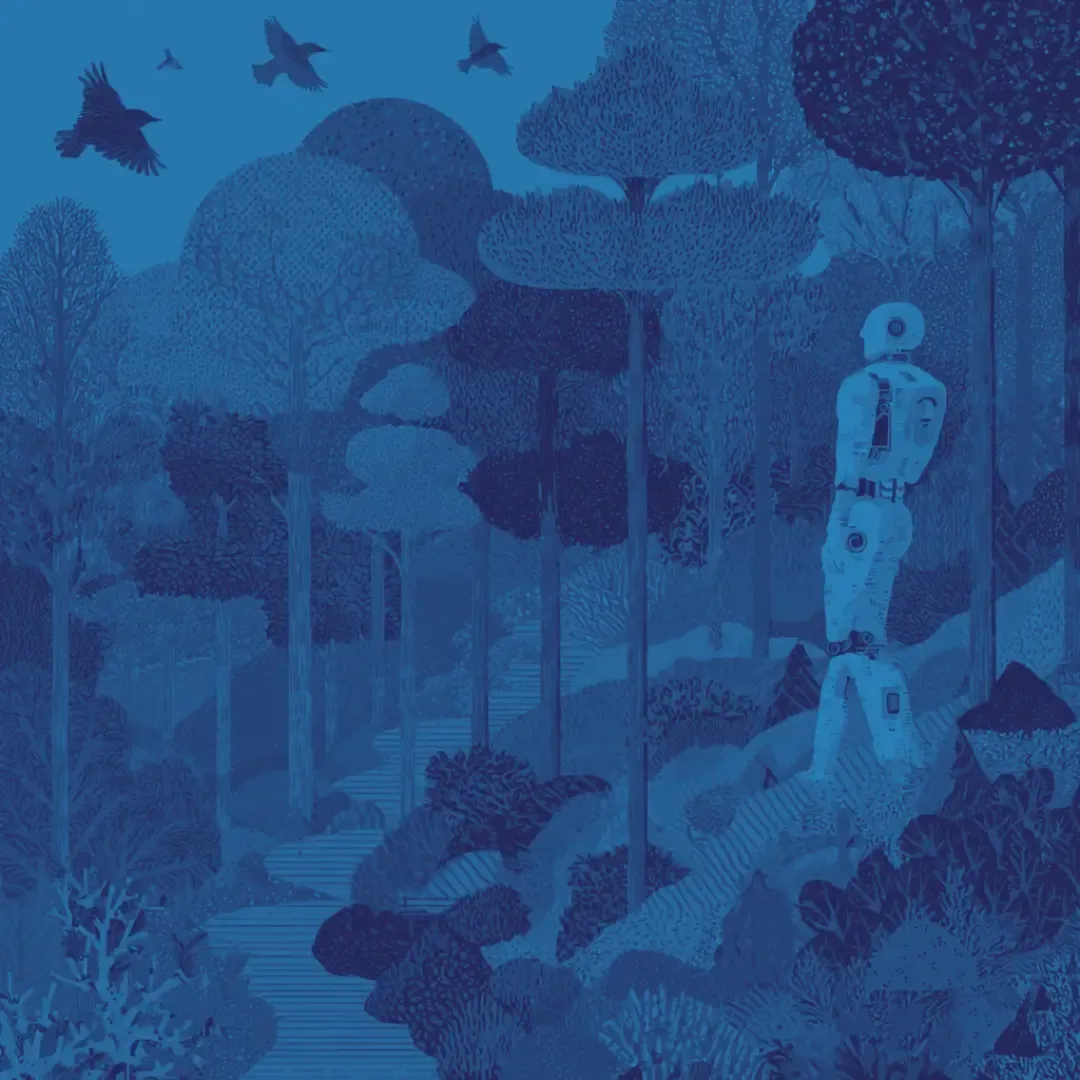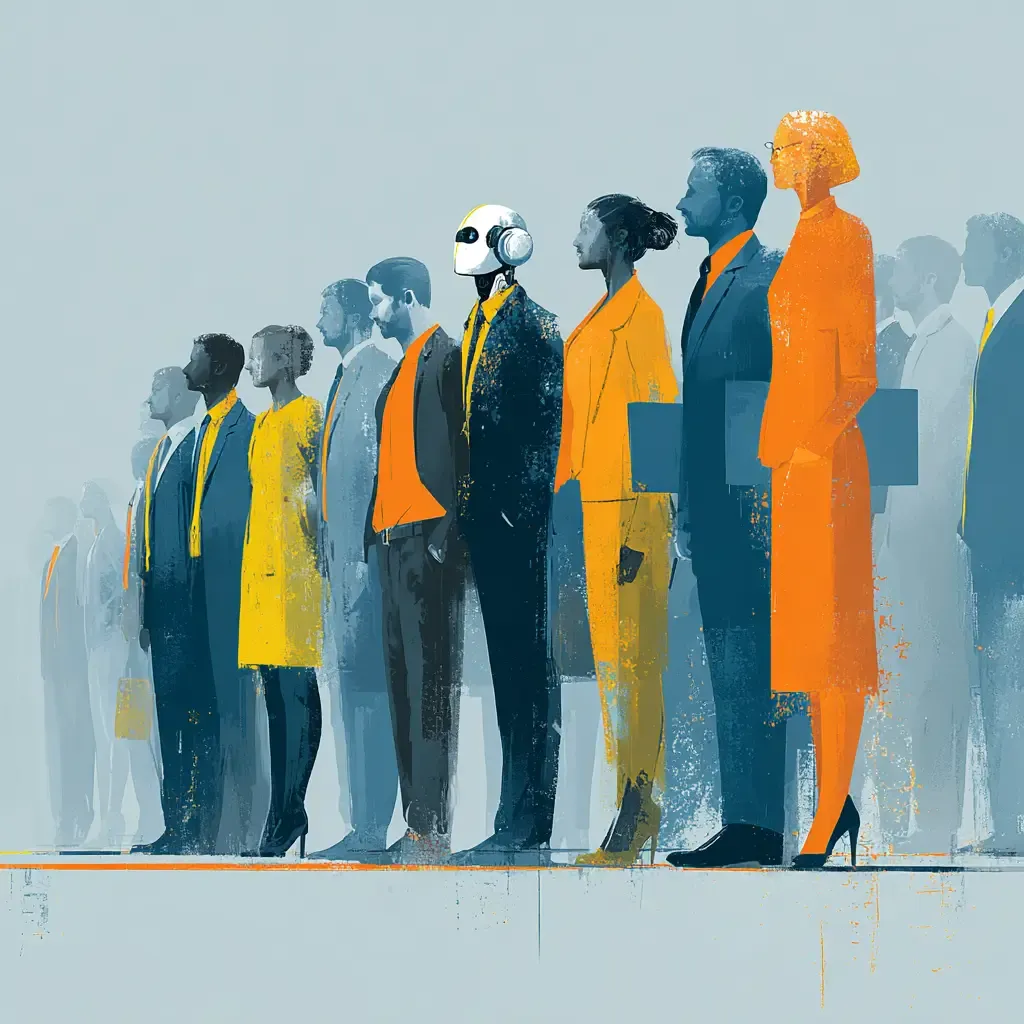Why no amount of nudges will replace leaders who notice, listen, and care
TL;DR: AI wellness tools can spot stress and nudge healthier habits, but they risk masking leadership failures. Empathy, dialogue, and noticing the unmeasurable are still the job of managers. AI should support well-being, not replace the human responsibility to care.
Beyond Nudges and Dashboards
AI-powered wellness systems promise to detect fatigue, predict burnout, and nudge employees toward healthier work rhythms. They’re smart, scalable, and frictionless. But beneath the hype lies an uncomfortable truth: these tools are compensating for leadership behaviors that should already be happening.
When managers outsource care to machines, they risk creating blind spots, reinforcing unhealthy cultures, and letting technology mask their own abdication of responsibility.
The Risks of Outsourcing Empathy
1. Delegating Empathy to the Algorithm
Leaders should notice when someone looks exhausted, disengaged, or burned out. If the only “check-in” an employee gets is a Slack bot reminding them to take a break, the message is clear: the humans in charge aren’t paying attention. AI becomes a crutch for managers unwilling—or unable—to connect.
2. Mistaking Data for Dialogue
Dashboards showing stress signals can’t replace a real conversation about workload, priorities, or personal struggles. Leaders who stare at wellness scores without asking questions risk treating people like performance metrics, not human beings.
3. Normalizing Blind Spots
AI can only read the signals it’s trained on—calendar overload, keystrokes, heart-rate variability. It won’t catch a toxic boss, a silent team member holding back tears, or the long grind of invisible caregiving. Leaders who stop looking beyond the dashboard risk missing what matters most.
What Leadership Still Requires
AI can support well-being, but it can’t absolve leaders of their jobs. Good leadership still requires:
- Noticing the unmeasurable. Silence in a meeting. Tone in an email. The humor that’s gone missing.
- Having tough conversations. About resourcing, priorities, and when “urgent” becomes unsustainable.
- Modeling healthy habits. Leaders who never log off can’t expect employees to.
- Creating safety. AI shouldn’t be the first line of defense—people should feel safe raising their own red flags.
Real Talk from the Field
“We had every dashboard telling us our team was stressed. But no one asked the obvious: why are we piling on more?” — Frustrated Program Manager,
“Our leaders relied on a wellness app to track burnout. What people needed was a manager who said, ‘No, you don’t have to take that late-night call.’” — Exhausted Agile Coach
Final Thought
AI for well-being is a worthy tool, but it’s no substitute for leadership that pays attention. If we allow machines to notice what leaders won’t, we erode the very human connection that makes work sustainable—and worth doing.
The real frontier isn’t AI nudges. It’s leaders who don’t need nudges to care.
ChangeGuild: Power to the Practitioner™
Frequently Asked Questions
What leadership behaviors are AI wellness tools compensating for?
They often cover for leaders who fail to notice burnout, engage in real conversations about workload, or model healthy work habits.
Can AI replace a manager’s responsibility to care for employees?
No. AI can augment awareness with data, but empathy, judgment, and human connection are core leadership responsibilities.
What risks arise if leaders rely too much on AI wellness dashboards?
Over-reliance can create blind spots, normalize toxic workloads, and make employees feel monitored instead of supported.
How should leaders use AI wellness tools responsibly?
As a safety net, not a substitute—using insights to spark conversations, adjust priorities, and support people directly.
What is the real frontier for employee well-being?
It’s not more nudges or dashboards—it’s leaders who don’t need a system to tell them their people are struggling.
Don’t Outsource Leadership AI can help spot burnout—but it can’t replace leaders who listen, notice, and care. If you’re leading transformation, the real opportunity is strengthening leadership behaviors alongside technology.
Let’s work together to close the leadership gap.
This post is free, and if it supported your work, feel free to support mine. Every bit helps keep the ideas flowing—and the practitioners powered. [Support the Work]







